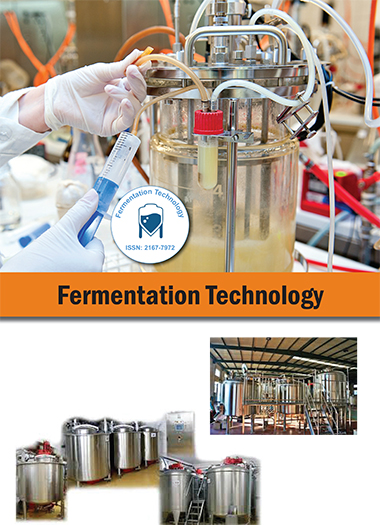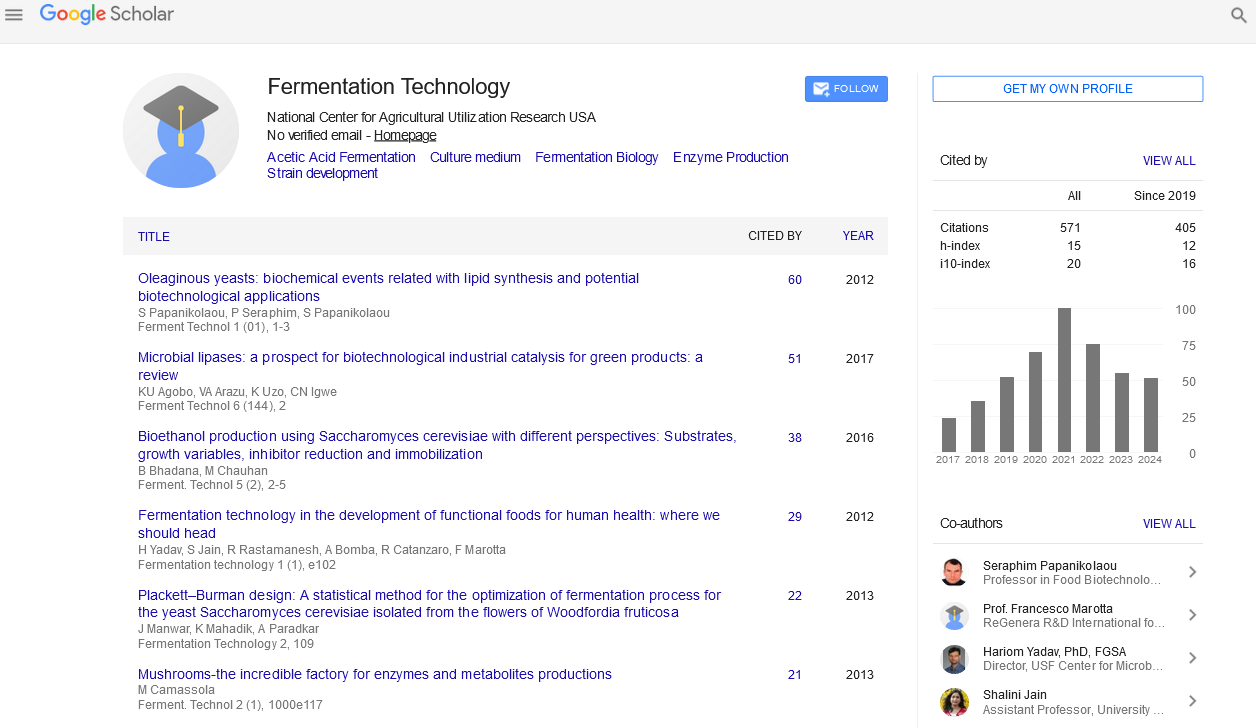Indexed In
- Open J Gate
- Genamics JournalSeek
- Access to Global Online Research in Agriculture (AGORA)
- RefSeek
- Hamdard University
- EBSCO A-Z
- OCLC- WorldCat
- Publons
Useful Links
Share This Page
Journal Flyer

Open Access Journals
- Agri and Aquaculture
- Biochemistry
- Bioinformatics & Systems Biology
- Business & Management
- Chemistry
- Clinical Sciences
- Engineering
- Food & Nutrition
- General Science
- Genetics & Molecular Biology
- Immunology & Microbiology
- Medical Sciences
- Neuroscience & Psychology
- Nursing & Health Care
- Pharmaceutical Sciences
Abstract
Effect of Divalent Metal Ions on Glucoamylase Activity of Glucoamylase Isolated from Aspergillus niger
Okwuenu PC, Agbo KU, Ezugwu AL, Eze SO and Chilaka FC
This study investigates the production of glucoamylase from Aspergillus niger in a submerged fermentation process using amylopectin fractionated from guinea corn starch as the carbon source. This work also studies the effect of a few metal ions (Ca2+, Zn2+, Co2+, Fe2+, Mn2+ and Pb2+) concentration on the glucoamylase activity. A Fourteen day experimental study was carried out to determine the day of highest glucoamylase activity. Maximum glucoamylase activity was observed on day five of the submerged fermentation; hence, day five was mass produced. The specific activity for the crude enzyme was found to be 729.45 U/mg. The crude enzyme was purified to the level of gel filtration (using sephadex G-100) via ammonium sulphate precipitation. Ammonium sulphate saturation of 70% was found suitable to precipitate the enzyme. After ammonium sulphate precipitation and gel filtration, the specific activities were found to be 65.98 U/mg and 180.52 U/mg respectively. The glucoamylase activity was enhanced by 2 mM to 5 mM of Ca2+, Co2+, Fe2+, Mn2+and Zn2+ but Pb2+ had inhibitory effect on the enzyme. The Michaelis constant, Km and maximum velocity Vmax of the enzyme was obtained from the Lineweaver-Burk plot of initial velocity data at different substrate concentrations. They were found to be 770.75 mg/ml and 2500 μmol/min respectively, when using cassava starch as substrate. The enzyme glucoamylase is known to have useful applications in food processing industries and fermentation biotechnology

